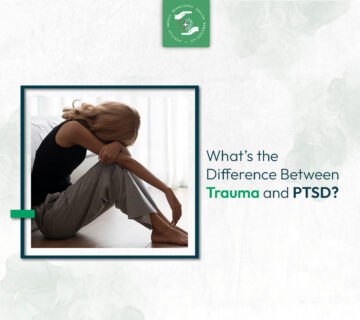In an era where mental health is finally getting the spotlight, the technique of mindfulness has emerged as a powerful tool in the journey of trauma recovery. This blog dives deep into how this ancient practice is being revitalized to aid in the healing of modern wounds.
The Intersection of Mindfulness and Trauma Counseling
Mindfulness, a practice rooted in ancient traditions, has found a new home in modern trauma counseling. Its principles of being present and fully engaging with our experiences without judgment resonate deeply with those looking to heal from trauma. By focusing on the here and now, individuals are taught to observe their thoughts and feelings without being overwhelmed by them, creating a safe space for healing.
Critics and skeptics have questioned the efficacy of integrating mindfulness into trauma therapy. However, numerous studies have shown that the practice can significantly reduce symptoms of PTSD, anxiety, and depression – all common in those who have experienced trauma. By promoting a state of calm and focus, mindfulness equips individuals with the tools to manage distressing memories and emotions more effectively.
Techniques for Incorporating Mindfulness into Trauma Recovery
Implementing mindfulness into trauma counseling doesn’t follow a one-size-fits-all approach. Techniques can range from guided meditations that help individuals anchor themselves in the present, to mindful walking, which combines physical activity with a focus on the senses. These practices offer a doorway to reconnecting with the body and its sensations, often dissociated from in experiences of trauma.
Another effective technique is the use of mindfulness-based stress reduction (MBSR), a structured program that teaches stress management through mindfulness meditation and yoga. For trauma survivors, MBSR provides a gentle yet profound way to regain control over emotional responses and break the cycle of chronic stress.
Journaling, while not often immediately associated with mindfulness, serves as a powerful tool to facilitate mindful reflection. Writing about experiences, thoughts, and feelings can help process them in a way that’s both focused and reflective, offering deeper insights into one’s healing journey.
Case Studies: The Impact of Mindfulness on Healing
One compelling case study involves a veteran with PTSD who turned to mindfulness as part of his recovery. After months of practice, he reported a significant reduction in flashbacks and an improved ability to cope with anxiety. This story is just one of many illustrating the profound impact mindfulness can have on those healing from trauma.
In another instance, a group of women survivors of domestic violence participated in an 8-week mindfulness training program. The outcomes showed remarkable improvements in their overall mental health, demonstrating the power of this practice in providing relief and hope to those in dire need of healing.
As we’ve unfolded the layers of mindfulness in the context of trauma counseling, it’s evident that this practice isn’t just a trend but a transformative approach to healing. Embracing mindfulness means more than meditation; it symbolizes a step towards self-compassion and recovery in the arduous journey from trauma.






No comment